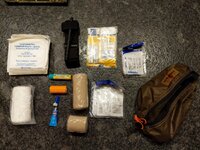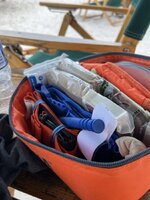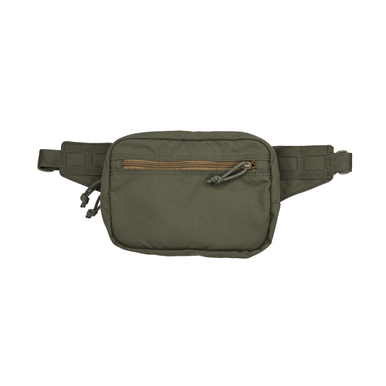Definitely something I often find myself considering. I moved away from using a lid for awhile and went back to one for pretty much this reason as my med kit ended up a buried and, as you pointed out, I've been considering breaking my kit up into a larger bag and a smaller bag with a TQ and pressure bandage that is immediately available. Where I run into some problems is different packs for different activities: hunting, scouting, backpacking, day hiking/peak bagging etc, backcountry skiing and so on -various packs with varied configurations. For example, I often use an air bag when backcountry skiing, but not always and my airbag pack is a completely different configuration than my non airbag pack -would be ideal to have some consistency throughout. I find myself thinking about that more when backcountry skiing since there is so much more inherent risk. The constant change of layers makes chest rigs impractical. I already spend enough time cussing at a bino harness -I really don't want to trick one out with add ons.
I've even considered starting to carry some type of med kit while resort skiing as I have came across very injured parties at least 3-4 times in the last few years as the first on the scene and had to call ski patrol and send someone to contact them when there was no service. In those cases, there was nothing a med kit would have done as. they were neck and back injuries, but one could just as easily come across someone at risk of bleeding out.
At the same time, you can contextualize that perspective with the fact that you are comparably "extremely prepared" just by the fact that you have a kit that can deal with many injury scenarios for at least the short term even if you have to dump your pack contents to use it. That is a contrast to not carrying anything at all or a very minimal kit that is going to rely on Macgyvering any situation with TP and duct tape. For me at least, it seems to be this ever evolving setup.



